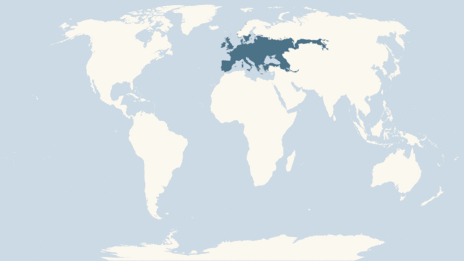Post by Ceratodromeus on Feb 28, 2016 9:49:24 GMT 5

Scientific classification
Kingdom: Animalia
Phylum: Chordata
Subphylum: Vertebrata
Class: Reptilia
Order: Squamata
Suborder: Lacertilia
Family: Anguidae
Genus: Anguis
Species: A.fragilis
Description
Contrary to the common name of this animal, it is not a worm, but a species of lizard. The common name arises from the animal's 'freezing' posture when confronted, or they move very slowly. At first glance many will assume this animal to be a snake, However, it can be distinguished from a snake via the possession of moveable eyelids as well as many anatomical differences, really all but helps the casual observer. These animals are a light brown to a grey in coloration. A single dorsal stripe running from about the nape of the neck to the tail is present in some, but not all, animals. Some animals possess a speckled white and brown coloration on the ventral side of the body and on the sides as well, and further others possess darkly pigmented, singular stripe running the animal's length. Very rarely, you will see a "blue spotted form" pop up in a population{3}.

The eyes and nostrils are small. Adult females tend to be slightly longer then the males, also being heavier; a population from the Netherlands, for example, had a sample of 66 adult females ranged from 131-385mm(5.1-7.2in)averaging 156(6.1in) in SVL. Total length ranged from (10.6-15.1in), with an average of 330mm(12.9in){2}. Out of a sample of 19 animals from the same study area, SVL ranged from 120-179mm(4.7-7.0in), averaging 142mm(5.5in). Total body lengths for males ranged from 258-301mm(10.1-11.8in), avering 282mm(11.1in){2}. Large animals have been documented at 431-457mm(17-18in) in total length{1}. Weights for adult females of this population with complete tails ranged from 13-26g(0.4-0.9oz), averaging 19.4g(0.6oz). In males with complete tails, weights ranged7.4-11.4g(0.2-0.4oz), averaging 8.5g(0.29oz){2}.
Geographic distribution & Habitat
This is a very widespread, very successful species of lizard. They can be found from Southwestern Europe(namely Spain), to Turkey, and even Iran. They are semi fossorial in nature, spending alot of time under ground in burrows crafted by small mammals, under logs, or under rocks. During the cooler months, they will spend most of their time in these retreats. However in the warmer months, they can be observed basking in direct sunlight on top of these retreats. Cloacal temperatures taken in a study on an alpine population ranged from 22-31 degrees Celsius(71-88 degrees fahrenheit)in gravid and non-gravid females{4}. In urban areas they can be commonly found in the soil of people's gardens.

Dietary habits
The slow worm preys on a wide range of invertebrates. Various Lepidoptera, Hymenoptera, Diptera, and Coleopteran larvae, Ants, bees, wasps, Springtails, scorpions, spiders and millipedes have all been recorded as food for this lizard. However, they seem to have a very strong preference for slugs, snails, and earthworms -- which singularly make up significant portions of the animal's diet{1,5}. The way in which they take slugs is slow and deliberate, and they will poise themselves over their chosen prey animal, grab it around the midsection, drag it a short distance, and then proceed to swallow it.

Behaviors
If they are feeling exposed, these animals will either freeze in their tracks, or begin to try and move away very slowly -- this is in part where their common name comes from. If they are grabbed or otherwise bothered, slow worms will readily discard(automotize) their tails, in a bid to distract whatever is harassing them. They are also known to bite people if they are handled{1}. Otherwise, if they are spotted and pursued, they will try and move away with surprising speed. One juvenile was documented diving into a puddle after being pursued by an observer{6}.
Reproduction
Slow worms are viviparous, meaning they give birth instead of laying eggs. When they are born, the young must break through a thin membrane casing that artificially resembles an egg. Females give birth in August or September, and their litter varies greatly and is likely tied to the size of the female. A litter can range from as little as four to as many as twelve; these young animals will measure around two inches in total length typically{1}. There is little to no level of parental care demonstrated by the female, though she may stay coiled in the birth site with the young for around a day{7}. After this, the young are independent and will disperse themselves.

References
{1} Leighton, Gerald Rowley. The Life History of British Lizards: And Their Local Distribution in the British Isles. George A. Morton, 1903.
{2} Stumpel, Anton HP. "Biometrical and ecological data from a Netherlands population of Anguis fragilis (Reptilia, Sauria, Anguidae)." Amphibia-Reptilia 6.2 (1985): 181-194.
{3} Capula, Massimo, Luca Luiselli, and Ernesto Capanna. "The blue‐spotted morph of the slow worm, Anguis fragilis: Colour polymorphism and predation risks." Italian Journal of Zoology 64.2 (1997): 147-153.
{4} Capula, Massimo, and Luca Luiselli. "Ecology of an alpine population of the slow worm, Anguis fragilis Linnaeus, 1758. Thermal biology of reproduction." Herpetozoa 6.1/2 (1993): 57-63.
{5} Pedersen, Iben Lindegaard, Jan Kjærgaard Jensen, and Søren Toft. "A method of obtaining dietary data for slow worms (Anguis fragilis) by means of non‐harmful cooling and results from a Danish population." Journal of Natural History 43.15-16 (2009): 1011-1025.
{6} Gollmann, Günter, and Birgit Gollmann. "Diving in the lizards Anguis fragilis and Lacerta agilis." North-Western Journal of Zoology 4.2 (2008): 324-326.
{7} Greene, Harry W., J. Jesús Sigala Rodríguez, and Brian J. Powell. "Parental behavior in anguid lizards." South American Journal of Herpetology 1.1 (2006): 9-19.



